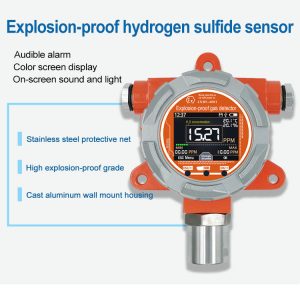Indoor air pollution is a significant health concern, with pollutants often present at higher concentrations than outdoor air. Poor indoor air quality can lead to adverse health effects, such as respiratory illnesses, allergies, and even cancer. Gas sensors are an essential tool in detecting and mitigating indoor air pollution, providing real-time, accurate data on pollutant levels. This article explores the role of gas sensors in identifying indoor air pollutants and implementing effective mitigation strategies.

Understanding Indoor Air Pollutants:
Indoor air pollutants can originate from various sources, including building materials, cleaning products, tobacco smoke, mold, and fungi. The most common pollutants include carbon monoxide (CO), nitrogen dioxide (NO2), volatile organic compounds (VOCs), and particulate matter (PM). These pollutants can have significant adverse health effects, and long-term exposure can cause chronic illnesses.
Gas Sensor Technologies for Indoor Air Quality:
Gas sensors are designed to detect specific pollutants, providing real-time data on their concentration levels. Electrochemical sensors, metal-oxide sensors, infrared sensors, and photo-ionization detectors are some of the commonly used technologies for detecting indoor air pollutants. They enable continuous monitoring of pollutants, allowing for timely interventions to improve indoor air quality.
Applications of Gas Sensors in Indoor Environments:
Gas sensors have extensive applications in improving indoor air quality. They can be used to monitor the effectiveness of ventilation systems, identify mold growth, and detect radon gas. In addition, gas sensors can be integrated into smart building systems to facilitate decision-making and automate ventilation systems for better air quality management. Furthermore, gas sensor networks can be deployed in public spaces to monitor air quality, empowering citizens to take action to mitigate poor indoor air quality.
Personal Exposure Monitoring:
Wearable gas sensors have emerged as a promising tool for tracking personal exposure to indoor air pollutants. These sensors enable individuals to monitor their exposure levels and take appropriate action to prevent adverse health effects. They can also be used by workers in hazardous environments to ensure safe work conditions.
Implementing Effective Mitigation Strategies:
Gas sensors provide real-time data on pollutant levels, allowing for prompt action to mitigate poor indoor air quality. By identifying the sources of pollutants, building owners can implement effective ventilation systems, promote green cleaning practices, and remove or replace building materials that emit pollutants. Gas sensors also enable policymakers to enforce regulations and develop effective mitigation strategies to protect public health.

Conclusion:
Indoor air pollution is a significant health concern, but gas sensors can play a critical role in detecting and mitigating indoor air pollutants. With their real-time detection capabilities, gas sensors enable individuals, building owners, and policymakers to monitor and tackle indoor air pollution effectively. By identifying pollutant sources and implementing effective mitigation strategies, we can improve indoor air quality and ultimately protect public health. The continued development and deployment of gas sensors will pave the way for healthier indoor environments, ultimately contributing to a more sustainable future.
 : +86 155 8830 2704
: +86 155 8830 2704 : jxdziot@gmail.com
: jxdziot@gmail.com
